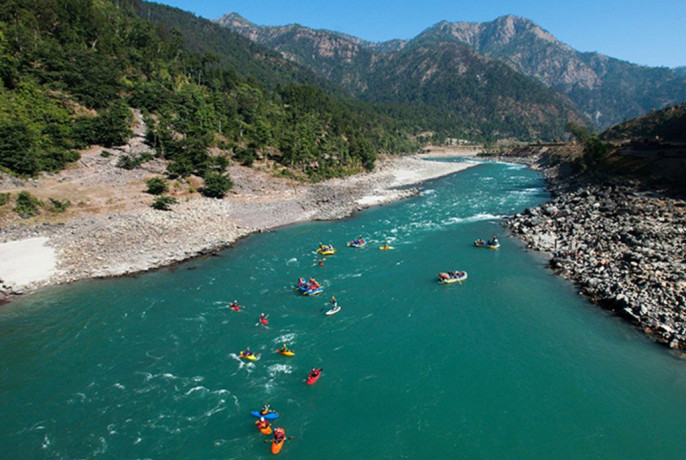Karnali River: The Wild Spirit of Nepal's Northwest Professional
Nov 30th, 2023 at 09:59 Blogs Kathmandu 295 views Reference: 1169Location: Kathmandu
Price: Contact us
Karnali River: The Wild Spirit of Nepal's Northwest
Introduction:
Rising from the remote corners of the Tibetan plateau, the Karnali River descends through the rugged terrain of western Nepal, earning its reputation as the longest and mightiest river in the country. Often referred to as the "Ghaghara" in India, the Karnali plays a crucial role in shaping landscapes, sustaining diverse ecosystems, and offering a unique experience for those who venture along its untamed course. This article explores the geological origins, cultural significance, and environmental importance of the Karnali River.
Geographical Origin and Course:
The Karnali River originates from the sacred Lake Mansarovar in Tibet, making its way through the trans-Himalayan region before entering Nepal. The river's course takes it through the northern districts of Dolpa and Humla, where it gains strength from the melting snow and glacier-fed tributaries.
As the Karnali journeys southward, it carves through deep gorges, passes through remote villages, and eventually joins the Ganges in the plains of northern India. The river's wild and pristine character makes it a captivating force of nature, drawing adventurers and nature enthusiasts alike.
Cultural Significance:
The Karnali River basin is home to various ethnic communities, including the indigenous Raute and Thakuri people, each with its distinct cultural identity shaped by the river's influence. The riverbanks are dotted with ancient temples, monasteries, and traditional settlements, reflecting the cultural richness of the region.
Local communities rely on the Karnali for sustenance, drawing water for agriculture, fishing, and other daily needs. The river also holds spiritual importance, with rituals and ceremonies performed along its shores, emphasizing its sacred role in the lives of the people.
Adventure and Exploration:
The Karnali River offers a thrilling adventure for those seeking the untamed beauty of Nepal's western landscapes. The river is renowned for its challenging rapids, making it a sought-after destination for whitewater rafting and kayaking enthusiasts. The Karnali's remote location and pristine surroundings add to the allure, providing a unique opportunity to experience the raw power of nature.
Environmental Significance:
The Karnali River basin is characterized by its diverse ecosystems, ranging from alpine meadows to subtropical forests. The river and its tributaries support a rich array of flora and fauna, including endemic species. The region is home to iconic wildlife such as the red panda, Himalayan tahr, and various species of birds.
Conservation efforts are essential to safeguard the environmental integrity of the Karnali River. Initiatives focus on sustainable development, habitat preservation, and responsible tourism practices to balance human needs with the conservation of the river's unique ecosystems.
Challenges and Future Outlook:
Despite its pristine beauty, the Karnali River faces challenges such as deforestation, habitat degradation, and the potential impacts of climate change. Addressing these challenges requires a collaborative effort involving local communities, government bodies, and environmental organizations.
As Nepal continues to develop, it is crucial to implement sustainable practices that balance the economic benefits derived from the Karnali with the need to protect its ecological and cultural heritage. By fostering a sense of environmental stewardship and responsible tourism, the Karnali River can remain a symbol of the untamed spirit of Nepal's northwest for generations to come.
Conclusion:
The Karnali River, with its origins in the high Himalayas and its journey through the remote landscapes of western Nepal, embodies the untamed spirit of nature. From its cultural significance to its role in sustaining diverse ecosystems, the Karnali stands as a testament to the interconnectedness of geography, culture, and the environment. As efforts to conserve and protect this mighty river continue, the Karnali remains a source of inspiration for those who recognize the importance of preserving the wild beauty that defines Nepal's northwest.


